Serenoa repens for the treatment of lower urinary tract symptoms due to benign prostatic enlargement
- PMID: 37345871
- PMCID: PMC10286776
- DOI: 10.1002/14651858.CD001423.pub4
Serenoa repens for the treatment of lower urinary tract symptoms due to benign prostatic enlargement
Abstract
Background: Benign prostatic hyperplasia (BPH) is a non-malignant enlargement of the prostate, which can lead to obstructive and irritative lower urinary tract symptoms (LUTS). The pharmacologic use of plants and herbs (phytotherapy) for the treatment of LUTS associated with BPH is common. The extract of the berry of the American saw palmetto or dwarf palm plant, Serenoa repens (SR), which is also known by its botanical name of Sabal serrulatum, is one of several phytotherapeutic agents available for the treatment of BPH.
Objectives: To assess the effects of Serenoa repens in the treatment of men with LUTS consistent with BPH.
Search methods: We performed a comprehensive search of multiple databases (the Cochrane Library, MEDLINE, Embase, Scopus, Web of Science, and LILACS), trials registries, other sources of grey literature, and conference proceedings published up to 16 September 2022, with no restrictions on language or publication status.
Selection criteria: We included randomized controlled trials of participants with BPH who were treated with Serenoa repens or placebo/no treatment.
Data collection and analysis: Two review authors independently assessed studies for inclusion at each stage and undertook data extraction and risk of bias assessment and GRADE assessment of the certainty of the evidence. We considered review outcomes measured up to 12 months after randomization as short term, and beyond 12 months as long term. Our main outcomes included urologic symptom scores, quality of life, and adverse events.
Main results: For this update, we narrowed the review question to only comparisons with placebo. We included 27 studies (of which 9 were new) involving a total of 4656 participants, 19 studies comparing Serenoa repens with placebo, and 8 studies comparing Serenoa repens in combination with other phytotherapeutic agents versus placebo. Most studies included men aged > 50 (mean age range 52 to 68) with moderate urologic symptoms (International Prostate Symptom Score [IPSS] range 8 to 19). Ten studies were funded by the pharmaceutical industry; two studies were funded by government agencies; and the remaining studies did not specify funding sources. Serenoa repens versus placebo or no intervention Results for this comparison are based on predefined sensitivity analyses limited to studies at low risk of bias. Serenoa repens results in little to no difference in urologic symptoms at short-term follow-up (3 to 6 months; IPSS score range 0 to 35, higher scores indicate worse symptoms; mean difference (MD) -0.90, 95% confidence interval (CI) -1.74 to -0.07; I2 = 68%; 9 studies, 1681 participants; high-certainty evidence). Serenoa repens results in little to no difference in the quality of life at short-term follow-up (3 to 6 months; IPSS quality of life domain range 0 to 6, higher scores indicate worse quality of life; MD -0.20, 95% CI -0.40 to -0.00; I2 = 39%; 5 studies, 1001 participants; high-certainty evidence). Serenoa repens probably results in little to no difference in adverse events (1 to 17 months; risk ratio (RR) 1.01, 95% CI 0.77 to 1.31; I2 = 18%; 12 studies, 2399 participants; moderate-certainty evidence). Based on 164 cases per 1000 men in the placebo group, this corresponds to 2 more (38 fewer to 51 more) per 1000 men in the Serenoa repens group. Serenoa repens results in little to no difference in urologic symptoms at long-term follow-up (12 to 17 months, IPSS score, MD 0.07, 95% CI -0.75 to 0.88; I2 = 34%; 3 studies, 898 participants; high-certainty evidence). Serenoa repens results in little to no difference in quality of life at long-term follow-up (12 to 17 months, IPSS quality of life, MD -0.11, 95% CI -0.41 to 0.19; I2 = 65%; 3 studies, 882 participants; high-certainty evidence). There were no data on long-term adverse events for this comparison. Serenoa repens in combination with other phytotherapy versus placebo or no intervention Different phytotherapeutic agents that include Serenoa repens may result in little to no difference in urologic symptoms compared to placebo at short-term follow-up (12 to 24 weeks, IPSS score, MD -2.41, 95% CI -4.54 to -0.29; I2 = 67%; 4 studies, 460 participants; low-certainty evidence). We are very uncertain about the effects of these agents on quality of life (very low-certainty evidence). These agents may result in little to no difference in the occurrence of adverse events; however, the CIs included substantial benefits and harms (12 to 48 weeks, RR 0.91, 95% CI 0.58 to 1.41; I2 = 0%; 4 studies, 481 participants; low-certainty evidence). Based on 132 cases per 1000 men in the placebo group, this corresponds to 12 fewer (55 fewer to 54 more) per 1000 men in the combined phytotherapeutic agents with Serenoa repens group.
Authors' conclusions: Serenoa repens alone provides little to no benefits for men with lower urinary tract symptoms due to benign prostatic enlargement. There is more uncertainty about the role of Serenoa repens in combination with other phytotherapeutic agents.
Copyright © 2023 The Cochrane Collaboration. Published by John Wiley & Sons, Ltd.
Conflict of interest statement
JVAF: none known.
LT: none known.
NJS: none known.
GAA: none known.
CF: none known.
CMEL: none known.
JHJ: none known.
JVAF and JHJ are contact editors for the Cochrane Urology Group but were excluded from the editorial processing of this article.
Figures
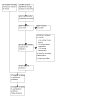

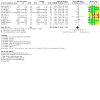
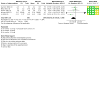
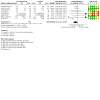
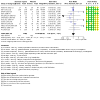

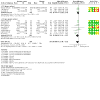
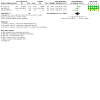
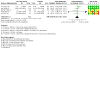
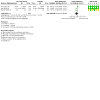

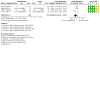

Update of
-
Serenoa repens for benign prostatic hyperplasia.Cochrane Database Syst Rev. 2012 Dec 12;12(12):CD001423. doi: 10.1002/14651858.CD001423.pub3. Cochrane Database Syst Rev. 2012. Update in: Cochrane Database Syst Rev. 2023 Jun 22;6:CD001423. doi: 10.1002/14651858.CD001423.pub4. PMID: 23235581 Free PMC article. Updated.
Comment in
-
Saw Palmetto for the Treatment of Lower Urinary Tract Symptoms Due to Benign Prostatic Hyperplasia.Am Fam Physician. 2024 May;109(5):396-397. Am Fam Physician. 2024. PMID: 38804752 No abstract available.
References
References to studies included in this review
Argirović 2013 {published data only}
-
- Argirovic A, Argirovic D. Does the addition of Serenoa repens to tamsulosin improve its therapeutical efficacy in benign prostatic hyperplasia? Vojnosanit Pregl 2013;70(12):1091-6. [PMID: ] - PubMed
-
- Argirovic D. Tamsulosin with or without Serenoa repens in benign prostatic hyperplasia: The Comb TAMSR trial. European Urology Supplements 2009;8(8):574-574.
Barry 2011 {published data only}
-
- Barry MJ, Meleth S, Lee JY, Kreder KJ, Avins AL, Nickel JC, et al. Effect of increasing doses of Saw palmetto extract on lower urinary tract symptoms. JAMA 2011;306(12):1344-51. [clinicaltrials.gov ID: NCT00603304] - PMC - PubMed
-
- Cantor A, Barry M. Factors that affect men's feelings about their urination: findings from a multi-center clinical trial of phytotherapy to treat lower urinary tract symptoms. Clinical Trials (London, England) 2012;9(4):498.
-
- Crawford ED, Sullivan KF, Arangua P, Lee J, Lensing S, O'Donnell CI. Comparison of the american urological association symptom index with a short version, uwin, in a clinical phytotherapy trial. Journal of Urology 2012;187(4 SUPPL. 1):e700.
BASTA 2010 {unpublished data only}
-
- Efficacy of two formulations of Sabal serrulata; a double-blind; randomized; placebo-controlled phase III study. https://www.clinicaltrialsregister.eu/ctr-search/search?query=2006-00353... (Published 12 March 2010).
Bauer 1999 {published data only}
-
- Bauer HW, Casarosa C, Cosci M, Fratta M, Blessmann G. Saw palmetto fruit extract for treatment of benign prostatic hyperplasia. Results of a placebo-controlled double-blind study [Behandlung der benignen Prostatahyperplasie mit Sabalfrucht-Extrakt: Wirksamkeit und Verträglichkeit - Ergebnisse einer plazebokontrollierten Doppelblindstudie]. MMW Fortschritte der Medizin 1999;141(25):127-32. - PubMed
Bent 2006 {published data only}
-
- Bent S, Kane C, Shinohara K, Neuhaus J, Hudes E, Goldberg H, et al. Saw palmetto for benign prostatic hyperplasia. The New England Journal of Medicine 2006;354(6):557-66. [CLINICALTRIALS.GOV: NCT00037154] [DOI: 10.1056/NEJMoa053085] - DOI - PubMed
-
- Bent S, Kane CJ, Shinohara K, Goldberg H, Neuhaus J, Avins A. A randomized controlled trial of saw palmetto for the treatment of benign prostatic hyperplasia. Journal of Urology 2005;173(4):443-443.
-
- NCT00037154. Saw Palmetto Extract in Benign Prostatic Hyperplasia. https://clinicaltrials.gov/ct2/show/NCT00037154 First Posted: May 17, 2002.
Boccafoschi 1983 {published data only}
-
- Boccafoschi C, Annoscia S. Serenoa repens extract and placebo in prostatic benign hyperplasia: clinical results [Confronto fra estratto di serenoa repens e placebo mediate prova clinica controllata in pazienti con adenomatosi prostatica]. Urologia 1983;50:1257-68. [DOI: 10.1177/039156038305000615] - DOI
Carbin 1990 {published data only}
-
- Carbin BE, Larsson B, Lindahl O. Treatment of benign prostatic hyperplasia with phytosterols. British Journal of Urology 1990;66(6):639-41. [MEDLINE: ] - PubMed
Champault 1984 {published data only}
Coulson 2013 {published data only}12610000168055
-
- ACTRN12610000168055. A study looking at the effectiveness of a oral herbal supplement for helping to manage the symptoms of enlarged prostate. https://anzctr.org.au/Trial/Registration/TrialReview.aspx?ACTRN=12610000... 19/02/2010.
-
- Coulson S, Rao A, Beck SL, Steels E, Gramotnev H, Vitetta L. A phase II randomised double-blind placebo-controlled clinical trial investigating the efficacy and safety of ProstateEZE Max: a herbal medicine preparation for the management of symptoms of benign prostatic hypertrophy. Complementary Therapies in Medicine 2013;321(3):172-9. [ANZCTR: 12610000168055] [DOI: 10.1016/j.ctim.2013.01.007] [PMID: ] - DOI - PubMed
Descotes 1995 {published data only}
-
- Descotes JL, Rambeaud JJ, Deschaseaux P, Faure G. Placebo-controlled evaluation of the efficacy and tolerability of Permixon® in benign prostatic hyperplasia after the exclusion of placebo responders. Clinical Drug Investigation 1995;5:291-7.
Gerber 2001 {published data only}
Glémain 2002 {published data only}
-
- Glémain P, Coulange C, Billebaud T, Gattegno B, Muszynski R, Loeb G, et al. Tamsulosin with or without Serenoa repens in benign prostatic hyperplasia: the OCOS trial [Tamsulosine avec ou sans Serenoa repens dans l'hypertrophie bénigne de la prostate: l'essai OCOS]. Progrès en Urologie 2002;12:395-403. - PubMed
Hizli 2007 {published data only}
-
- Hizli F, Uygur MC. A prospective study of the efficacy of Serenoa repens, tamsulosin, and Serenoa repens plus tamsulosin treatment for patients with benign prostate hyperplasia. International Urology and Nephrology 2007;39:879-86. - PubMed
Hong 2009 {published data only}
-
- Hong H, Kim CS, Lee JS, Maeng WJ. Effects of Saw Palmetto Extracted Oil Supplementation on Human Benign Prostatic Hyperplasia. FASEB Journal 2008;22:1108.6-1108.6.
Iacono 2015 {published data only}
-
- Iacono F, Ruffo A, Prezioso D, Romeo G, Illiano E, Romis L, et al. Combined treatment with Tradamixina® and Serenoa repens decreases PSA levels and prostate inflammation, improving the lower urinary tract symptoms (LUTS). A randomized, double-blind, placebo-controlled study on 185 patients: PS-04-009. Journal of Sexual Medicine 2015;2(Suppl 3):201. [DOI: 10.1111/jsm.12872_2] - DOI
Lopatkin 2005 {published data only}
-
- Lopatkin N, Sivkov A, Schläfke S, Funk P, Medvedev A, Engelmann U. Efficacy and safety of a combination of Sabal and Urtica extract in lower urinary tract symptoms—long-term follow-up of a placebo-controlled, double-blind, multicenter trial. International Urology and Nephrology 2007;39(4):1137‐1146. - PubMed
-
- Lopatkin N, Sivkov A, Walther C, Schläfke S, Medvedev A, Avdeichuk J, et al. Combined extract of sabal palm and nettle in the treatment of patients with lower urinary tract symptoms in the double blind, placebo-controlled trial. World Journal of Urology 2005;23(2):139-46. - PubMed
-
- Lopatkin N, Sivkov A, Walther C, Schläfke S, Medvedev A, Avdeichuk J, et al. Long-term efficacy and safety of a combination of sabal and urtica extract for lower urinary tract symptoms—a placebo-controlled, double-blind, multicenter trial. World Journal of Urology 2005;23(2):139‐146. - PubMed
-
- Lopatkin NA, Sivkov AV, Medvedev AA, Walter K, Schlefke S, Avdeĭchuk IuI, et al. Combined extract of Sabal palm and nettle in the treatment of patients with lower urinary tract symptoms in double blind, placebo-controlled trial. Urologiia (Moscow, Russia : 1999) 2006;(2):12, 14‐9. - PubMed
-
- Sivkov A, Köhler S, Engelmann U, Medvedev A, Lopatkin N. Long-term efficacy and safety of a combination of sabal and urtica extracts in LUTS—a placebo-controlled, double-blind, multicenter trial. Urologe A 2001;40 (Suppl 1):S19.
Mandressi 1983 {published data only}
-
- Mandressi S, Tarallo U, Maggioni A, Tombolini P, Rocco F, Quadraccia. Medical treatment of benign prostatic hyperplasia: efficacy of the extract of Serenoa repens (Permixon®) compared to that of the extract of Pygeum africanum and a placebo [Terapia medica dell'adenoma prostatico: confronto della efficacia dell'estratto di serenoa repens (Permixon®) versus l'estratto di pigeum africanum e placebo]. Urologia 1983;50(4):752-8.
Marks 2000 {published data only}
-
- Marks LS, Partin AW, Epstein JI, Tyler VE, Simon I, Macairan ML, et al. Effects of a saw palmetto herbal blend in men with symptomatic benign prostatic hyperplasia. The Journal of Urology 2000;163(5):1451-6. - PubMed
-
- Sokoll LJ, Marks LS, Mikolajczyk SD, Bruzek DJ, Mangold LA, Rittenhouse HG, et al. Effects of finasteride and saw palmetto on BPSA, propsa, and CPSA in men with benign prostatic hyperplasia. Journal of Urology 2004;171(4):438-439.
Metzker 1996 {published data only}
-
- Metzker H, Kieser M, Holscher U. Efficacy of a Sabal-Urtica Combination Drug in the Treatment of Benign Prostatic Hyperplasia (BPH) [Wirksamkeit eines Sabal-Urtica-kombinationspraparates bei der behandlung der benignen prostatahyperplasie (BPH)]. Der Urologe B 1996;36(4):292-300.
Morgia 2014 {published data only}ISRCTN78639965
-
- ISRCTN78639965. Serenoa repens, lycopene and selenium vs. tamsulosin for the treatment of lower urinary tract symptoms (LUTS)/ Benign prostatic hyperplasia (BPH). https://www.isrctn.com/ISRCTN78639965 Registration date: 11/12/2013.
-
- Morgia G, Russo GI, Voce S, Palmieri F, Gentile M, Giannantoni A, et al. Serenoa repens, lycopene and selenium versus tamsulosin for the treatment of LUTS/BPH. An Italian multicenter double-blinded randomized study between single or combination therapy (PROCOMB trial). Prostate 2014;74(15):1471-80. [DOI: 10.1002/pros.22866] [PMID: ] - DOI - PubMed
Preuss 2001 {published data only}
-
- Preuss HG, Marcusen C, Regan J, Klimberg IW, Welebir TA, Jones WA. Randomized trial of a combination of natural products (Cernitin, saw palmetto, beta-sitosterol, vitamin E) on symptoms of benign prostatic hyperplasia (BPH). International Urology and Nephrology 2001;33:217-25. - PubMed
Reece Smith 1986 {published data only}
-
- Reece Smith H, Memon A, Smart CJ, Dewbury K. The value of Permixon in benign prostatic hypertrophy. British Journal of Urology 1986;58:36-40. - PubMed
Ryu 2015 {published data only}
Shi 2008 {published data only}
-
- Shi R, Xie Q, Gang X, Lun J, Life C, Pantuck A, et al. Effect of saw palmetto soft gel capsule on lower urinary tract symptoms associated with benign prostatic hyperplasia: a randomized trial in Shanghai, China. The Journal of Urology 2008;179:610-5. - PubMed
Sudeep 2020 {published data only}
-
- Sudeep HV, Thomas JV, Shyamprasad K. A double blind, placebo-controlled randomized comparative study on the efficacy of phytosterol-enriched and conventional saw palmetto oil in mitigating benign prostate hyperplasia and androgen deficiency. BMC Urology 2020;20(1):86. [DOI: 10.1186/s12894-020-00648-9] [PMID: ] - DOI - PMC - PubMed
Willetts 2003 {published data only}
-
- Willetts KE, Clements MS, Champion S, Ehsman S, Eden JA. Serenoa repens extract for benign prostate hyperplasia: a randomized controlled trial. British Journal of Urology International 2003;92:267-70. - PubMed
Ye 2019 {published data only}
-
- ChiCTR-TRC-13003575. Effects of Saw Palmtto extract in binign prostatic hyperplasia and sexual function: a multicenter, randomized, double-blind, placebo-controlled trial. http://www.chictr.org.cn/showproj.aspx?proj=5985 10 September 2013.
-
- Ye Z, Huang J, Zhou L, Chen S, Wang Z, Ma L, et al. Efficacy and Safety of Serenoa repens Extract Among Patients with Benign Prostatic Hyperplasia in China: A Multicenter, Randomized, Double-blind, Placebo-controlled Trial. Urology 2019;129:172-179. [DOI: 10.1016/j.urology.2019.02.030] [PMID: ] - DOI - PubMed
References to studies excluded from this review
Adriazola Semino 1992 {published data only}
-
- Adriazola Semino M, Lozano Ortega JL, Garcia Cobo E, Tejeda Banez E, Romero Rodriguez F. Symptomatic treatment of benign hypertrophy of the prostate. Comparative study of prazosin and Serenoa repens [Tratamiento sintomatico de la hipertrofia benigna de prostata. Estudio comparativo entre prazosin y Serenoa repens]. Archivos Espanoles de Urologia 1992;45(3):211-3. [MEDLINE: ] - PubMed
Alcaraz 2022 {published data only}
-
- Alcaraz A, Gacci M, Ficarra V, Medina-Polo J, Salonia A, Fernández-Gómez JM et al. Efficacy and Safety of the Hexanic Extract of Serenoa repens vs. Watchful Waiting in Men with Moderate to Severe LUTS-BPH: Results of a Paired Matched Clinical Study. Journal of Clinical Medicine 2022;11(4):967. - PMC - PubMed
-
- Alcaraz A, Rodríguez-Antolín A, Carballido-Rodríguez J, Castro-Díaz D, Esteban-Fuertes M, Cózar-Olmo JM, et al. Clinical benefit of tamsulosin and the hexanic extract of serenoa repens, in combination or as monotherapy, in patients with moderate/severe luts-bph: A subset analysis of the qualiprost study. Journal of Clinical Medicine 2020;9(9):1-14. - PMC - PubMed
Ali 2020 {published data only}
-
- Ali L, Hayat F, Opal S, Kahn S, Kahn Q, Tariq K. Comparison of phytotherapy with alpha adrenocepters blockers in the treatment of symptomatic benign prostatic hyperplasia. Journal of Postgraduate Medical Institute 2020;34(2):129-133.
Aliaev 2009 {published data only}
-
- Aliaev IG, Apolikhin OI, Mazo EB, Vinarov AZ, Lokshin KL, Medvedev AA, et al. Efficacy and safety of prostamol-Uno in patients with chronic abacterial prostatitis [ЭФФЕКТИВНОСТЬ И БЕЗОПАСНОСТЬ ПРОСТАМОЛА-УНО У БОЛЬНЫХ ХРОНИЧЕСКИМ АБАКТЕРИАЛЬНЫМ ПРОСТАТИТОМ]. Urologiia 2006;1:47-50. - PubMed
Al‐Shukri 2000 {published data only}
-
- Al-Shukri SH, Deschaseaux P, Kuzmin IV. Early urodynamic effects of the lipido-sterolic extract of Serenoa repens (Permixon®) in patients with lower urinary tract symptoms due to benign prostatic hyperplasia. Prostate Cancer and Prostatic Diseases 2000;3:195-9. - PubMed
Authié 1987 {published data only}
-
- Authié D, Cauquil J. Appreciation of the efficacy of Permixon in daily practice: multicenter study [Appréciation de l'efficacité de Permixon en pratique quotidienne: étude multicentrique]. Comptes Rendus de Thérapeutique et de Pharmacologie Clinique 1987;5(56):4-13.
Bartsch 1998 {published data only}
-
- Bartsch G, Dreikorn K, Schontoger PS. Combined Sabal extract and Urtica extract versus finasteride in benign prostatic hyperplasia (stages I-II). UROLOGE A 1998;37(1):83-84. - PubMed
Braeckman 1997 {published data only}
-
- Braeckman J, Bruhwyler J, Vanderkerckhove K, Géczy J. Efficacy and safety of the extract of Serenoa repens in the treatment of benign prostatic hyperplasia: therapeutic equivalence between twice and once daily dosage forms. Phytotherapy Research 1997;1:558-63.
-
- Braeckman J, Denis L, Leval J, Keuppens F, Cornet A, De Bruyne, et al. A double-blind, placebo-controlled study of the plant extract Serenoa repens in the treatment of benign hyperplasia of the prostate. European Journal of Clinical Research 1997;9:247-59.
-
- Braeckman J. The extract of Serenoa repens in the treatment of benign prostatic hyperplasia: a multicenter open study. Current Therapeutic Research 1994;55(7):776-85.
Cai 2013 {published data only}
-
- Cai T, Morgia G, Carrieri G, Terrone C, Imbimbo C, Verze P, et al. An improvement in sexual function is related to better quality of life, regardless of urinary function improvement: results from the IDIProst Gold Study. Archivio italiano di urologia e andrologia 2013;85(4):184‐189. - PubMed
Carraro 1996 {published data only}
-
- Carraro JC, Raynaud JP, Koch G, Chisholm GD, Di Silverio F, Teillac P, et al. Comparison of phytotherapy (Permixon) with finasteride in the treatment of benign prostate hyperplasia: a randomized international study of 1,098 patients. The Prostate 1996;29(4):231-40. [MEDLINE: ] - PubMed
-
- Carraro JC, Raynaud JP, Koch G, Chisholm GD, Di Silverio F, Teiucic P, et al. Extract of saw palmetto for treatment of symptomatic benign prostatic hyperplasia. Integrative Medicine 1998;1(1):39-40.
Comar 1986 {published data only}
-
- Comar OB, Di Rienzo A. Mepartricin versus Serenoa repens: double-blind study in 20 cases of benign prostate hypertrophy. Rivista Italiana di Biologia e Medicina 1986;6(2):122-5.
CTRI/2012/10/003049 {published data only}
-
- CTRI/2012/10/003049. A Clinical Study to Evaluate the Safety and Efficacy of Capsule Outflo in Patients with Benign Prostatic Hyperplasia. https://trialsearch.who.int/Trial2.aspx?TrialID=CTRI/2012/10/003049 Date of registration: 08-10-2012.
CTRI/2020/09/027521 {published data only}
-
- CTRI/2020/09/027521. A clinical study to assess the Efficacy and Safety of SAW-1720 in Benign Prostate Hyperplasia patients. https://trialsearch.who.int/Trial2.aspx?TrialID=CTRI/2020/09/027521 Date of registration: 01-09-2020.
Debruyne 2002 {published data only}
-
- Debruyne F, Boyle P, Calais Da Silva F, Gillenwater JG, Hamdy FC, Perrin P, et al. Evaluation of the clinical benefit of Permixon and tamsulosin in severe BPH patients—PERMAL study subset analysis [Evaluation du benefice clinique de Permixon® et de la tamsulosine dans le traitement de l'hypertrophie bénigne de la prostate (HBP) sévére: Analyse d'une sous-groupe de l'étude Permal]. European Urology 2004;45:773-80. - PubMed
-
- Debruyne F, Boyle P, Da Silva FC, Gillenwater JG, Hamdy FC, Perrin P, et al. Evaluation of the clinical benefit of permixon((R)) and tamsulosin in severe BPH patients—PERMAL study subset analysis. PROGRES EN UROLOGIE 2004;14(3):326-331. - PubMed
-
- Debruyne F, Koch G, Boyle P, Da Silva FC, Gillenwater JG, Hamdy FC, et al. Comparison of a phytotherapeutic agent (Permixon) with an alpha-blocker (Tamsulosin) in the treatment of benign prostatic hyperplasia: a 1-year randomized international study [Comparaison d'un produit de phytotherapie (Permixon) et d'un alpha-bloquant (tamsulosine) dans le traitement de l'hypertrophie benigne de la prostate: etude internationale randomisee d'une duree de 12 mois]. Progres en Urologie 2002;12(3):384-94. - PubMed
-
- Debruyne F, Koch G, Da Silva FC, Gillenwater JG, Hamdy FC, Perrin P, et al. Comparison of a phytotherapeutic agent (Permixon®) with an a-blocker (tamsulosin) in the treatment of benign prostatic hyperplasia: a 1-year randomized international study [Comparaison d'un produit de phytothérapie (Permixon®) et d'un alpha-bloquant (tamsulosine) dans le traitement de l'hypertrophie bénigne de la prostate: étude internationale randomisée d'une durée de 12 mois]. Progrès en Urologie 2002;41:497-507. - PubMed
Di Maida 2020 {published data only}
-
- Di Maida F, Mari A, Rubino R, Minervini A, Carini M, Siena G. A Prospective, Open-Label Comparison of Tamsulosin plus Serenoa repens and Bovine Colostrum versus Tamsulosin Alone in the Treatment of Benign Prostatic Hyperplasia. Urologia Internationalis 2020;104(5-6):351-355. - PubMed
Di Silverio 1992 {published data only}
-
- Di Siverio F, D'Eramo G, Lubrano C, Flammia GP, Sciarra A, Palma E, et al. Evidence that Serenoa repens extract displays an antiestrogenic activity in prostatic tissue of benign prostatic hypertrophy patients. European Urology 1992;21(4):309-14. [MEDLINE: ] - PubMed
Duborija‐Kovacevic 2010 {published data only}
-
- Duborija-Kovacevic N, Sabo A, Pajovic B. Pharmacoeconomic evaluation of three different medications for lower urinary tract symptoms associated with BPH: Herbal extract versus standard drugs. European Urology, Supplements 2010;9(6):597-598.
Engelmann 2006 {published data only}
-
- Engelmann U, Walther C, Bondarenko B, Funk P, Schläfke S. Efficacy and safety of a combination of sabal and urtica extract in lower urinary tract symptoms. A randomized, double-blind study versus tamsulosin. Arzneimittel-Forschung 2006;56(3):222-9. - PubMed
EUCTR2011‐005307‐33‐FR {published data only}
-
- EUCTR2011-005307-33-FR. Exploratory study of L.S.E.S.r. (PERMIXON® 160 mg hard capsule) versus Tamsulosine LP activity on inflammation biomarkers in the treatment of urinary symptoms related to BPH, A multinational, multicentric, randomised, double-blind, parallel-group prospect. https://www.clinicaltrialsregister.eu/ctr-search/trial/2011-005307-33/re... Start Date: 24-09-2012.
Gerber 1998 {published data only}
-
- Gerber GS, Zagaja GP, Bales GT, Chodak GW, Contreras BA. Saw palmetto (Serenoa repens) in men with lower urinary tract symptoms: effects on urodynamic parameters and voiding symptoms. Urology 1998;51(6):1003-7. - PubMed
Giannakopoulos 2002 {published data only}
-
- Giannakopoulos X, Baltogiannis D, Giannakis D, Tasos A, Sofikitis N, Charalabopoulos K, et al. The lipidosterolic extract of Serenoa repens in the treatment of benign prostatic hyperplasia: a comparison of two dosage regimens. Advances in Natural Therapy 2002;19(2):285-96. - PubMed
Giulianelli 2012 {published data only}
-
- Giulianelli R, Pecoraro S, Sepe G, Leonardi R, Gentile BC, Albanesi L, et al. Multicentre study on the efficacy and tolerability of an extract of Serenoa repens in patients with chronic benign prostate conditions associated with inflammation. Archivio Italiano di Urologia e Andrologia 2012;84(2):94-98. - PubMed
Grasso 1995 {published data only}
-
- Grasso M, Montesano A, Buonaguidi A, Castelli M, Lania C, Rigatti P, et al. Comparative effects of alfuzosin versus Serenoa repens in the treatment of symptomatic benign prostatic hyperplasia. Archivos Españoles de Urología 1995;48(1):97-103. [MEDLINE: ] - PubMed
Gurzhenko 2020 {published data only}
-
- Gurzhenko I, Spyrydonenko V. Improvement of sexual functions in men with benign prostatic hyperplasia with long-term use of the Serenoa repens extract. Journal of Sexual Medicine 2020;17(6):S160-S161.
Guzman 2016 {published data only}
-
- Guzman R, Illnait J, Mas R, Fernandez L, Pedroso M, Fernandez J, et al. Efficacy and tolerability of Roystonea regia (D-004) and saw palmetto lipid extracts in men with symptomatic benign prostatic hyperplasia: a 24 weeks study. Gazzetta medica italiana archivio per LE scienze mediche 2016;175(10):413‐420.
-
- RPCEC00000138. D-004 in patients with Bening Prostatic Hyperplasia. https://rpcec.sld.cu/en/trials/RPCEC00000138-En 04 January 2013.
Hamdv 1997 {published data only}
-
- Hamdv FC, Chopin DK, Authie D, Deschaseaux P, Périer A, Raynaud J-P. Prostatic volume does not correlate with efficacy of treatment for mild to moderate benign prostatic hyperplasia using either finasteride or phytotherapy (permixon®). British Journal of Urology 1997;80(SUPPL. 2):195.
-
- Raynaud JP, Authié D, Deschaseaux P, Périer A, Fiet J, Perrin P. Influence of age and endocrine treatments (permixon ® and finasteride) on sexual function in benign prostatic hyperplasia (BPH) patients. British Journal of Urology 1997;80(Suppl 2):206.
Ju 2015 {published data only}
-
- Ju X, Gu X, Zhang Z, Wei Z, Xu Z, Miao H, et al. Efficacy and safety of Saw Palmetto Extract Capsules in the treatment of benign prostatic hyperplasia. Zhonghua nan ke xue [National journal of andrology] 2015;21(12):1098-1101. - PubMed
Latil 2015 {published data only}
Morgia 2013 {published data only}
-
- Morgia G, Cimino S, Favilla V, Russo GI, Squadrito F, Mucciardi G, et al. Effects of Serenoa repens, selenium and lycopene (Profluss®) on chronic inflammation associated with benign prostatic hyperplasia: results of "FLOG" (Flogosis and Profluss in Prostatic and Genital Disease), a multicentre Italian study. International braz j urol: official journal of the Brazilian Society of Urology 2013;39(2):214-221. - PubMed
Morgia 2018 {published data only}
-
- ISRCTN73316039. Sprite study. https://www.isrctn.com/ISRCTN73316039 Registration date: 22/05/2015.
-
- Morgia G, Vespasiani G, Pareo RM, Voce S, Madonia M, Carini M, et al. Serenoa repens + selenium + lycopene vs tadalafil 5 mg for the treatment of lower urinary tract symptoms secondary to benign prostatic obstruction: a Phase IV, non-inferiority, open-label, clinical study (SPRITE study). BJU International 2018;122(2):317‐325. - PubMed
NCT00797394 {unpublished data only}
-
- NCT00797394. Efficacy of natural extract 2007RD01 combined with Saw Palmetto in benign prostatic hyperplasia patients compared to Saw Palmetto. https://clinicaltrials.gov/ct2/show/NCT00797394 First Posted: November 25, 2008. [NCT00797394]
Pannunzio 1986 {published data only}
-
- Pannunzio E, Dascenzo R, Giardinetti F, Civili P, Persichelli E. Serenoa repens in the treatment of human benign prostatic hyperplasia (BPH). Journal of Urology 1987;137(4):A226-A226.
-
- Pannunzio E, D’Ascenzo R, Giardinetti F, Civili P, Persichelli E. Serenoa repens vs. Gestorone caproate in the treatment of benign prostatic hypertension: a randomized study [Serenoa repens vs. gestonorone caproato nel trattamento dell’ipertofia prostatica benigna: Studio randomizzato]. Urologia 1986;53(5):696-705.
Pavone 2010 {published data only}
-
- Pavone C, Abbadessa D, Taraintino ML, Oxenius I, Laganà A, Lupo A, et al. Association of Serenoa repens, Urtica dioica and Pinus pinaster. Safety and efficacy in the treatment of lower tract symptoms. Prospective study on 320 patients [Associazione di Serenoa repens , Urtica dioica e Pinus pinaster. Sicurezza ed efficacia nel trattamento dei sintomi del basso tratto ruinario. Studio prospettico su 320 pazienti]. Urologia 2010;77(1):43-51. - PubMed
Pecoraro 2004 {published data only}
-
- Pecoraro S, Annecchiarico A, Gambardella M-C, Sepe G. Efficacy of pretreatment with Serenoa repens on bleeding associated with transurethral resection of prostate [Effetto del pretrattamento con serenoa repens sul sanguinamento associato a resezione transuretrale della prostata]. Minerva Urologica e Nefrologica 2004;56:73-8. - PubMed
Popa 2005 {published data only}
-
- Popa G, Hägele-Kaddour H, Walther C. Symptomatic efficacy of a sabal-urtica combination preparation in the therapy of benign prostatic syndrome: results of a placebo-controlled double-blind study [Symptomatische wirksamkeit eines sabal-urtica-kombinationspräparats in der therapie des benignen prostatasyndroms: ergebnisse einer plazebokontrollierten doppelblindstudie]. MMW Fortschritte der Medizin 2005;147(Suppl 3):103-8. - PubMed
Romaniuk 2013 {published data only}
-
- Romaniuk M, Gorpynchenko I, Gurzhenko J, Klimenko P, Shulyak A, Spiridonenko V. PROSPECT study (PROStamol: perspectives of combined therapy) in patients with BPH. European urology, supplements 2013;12(4):e1150.
Roveda 1994 {published data only}
-
- Roveda S, Colombo P. Clinical controlled trial on therapeutical bioequivalence and tolerability of Serenoa repens oral capsules 160 mg or rectal capsules 640 mg [Sperimentazione clinica controllata sulla bioequivalenza terapeutica e sulla tollerabilita dei prodotti a base di Serenoa repens in capsule da 160 mg o capsule rettali da 640 mg]. Archivio di Medicina Interna 1994;46(2):61-75.
Sinescu 2011 {published data only}
Sökeland 1997 {published data only}
-
- Sökeland J, Albrecht J. Combined sabal and urtica extract compared with finasteride in men with benign prostatic hyperplasia: analysis of prostate volume and therapeutic outcome [Kombination aus Sabal- und Urticaestrakt vs. finasterid bei BPH (Stad. I bis II nach Alken); Vergleich der therapeutischen wirksamkeit in einer einjahrigen doppelblindstudie]. Urologe A 1997;36(4):327-33. [MEDLINE: ] - PubMed
-
- Sökeland J, Walther C. A combination preparation of sabal and urtica extract versus finasteride in benign prostatic hyperplasia (BPH)—an analysis of data regarding prostatic volume and treatment success. Zeitschrift fur Phytotherapie 2000;21(6):299-305.
-
- Sökeland J. Combined sabal and urtica extract compared with finasteride in men with benign prostatic hyperplasia: analysis of prostate volume and therapeutic outcome. British Journal of Urology International 2000;86:439-42. - PubMed
Stepanov 1999 {published data only}
-
- Stepanov VN, Siniakova LA, Sarrazin B, Raynaud JP. Efficacy and tolerability of the lipidosterolic extract of Serenoarepens (Permixon®) in benign prostatic hyperplasia: a double-blind comparison of two dosage regimens. Advances in Therapy 1999;16(5):231-41. - PubMed
Strauch 1994 {published data only}
-
- Strauch G, Perles P, Vergult G, Gabriel M, Gibelin B, Cummings S, et al. Comparison of finasteride (Proscar®) and Serenoa repens (Permixon®) in the inhibition of 5-alpha reductase in healthy male volunteers. European Urology 1994;26(3):247-52. [MEDLINE: ] - PubMed
Suardi 2014 {published data only}
-
- Suardi N, Gandaglia G, Nini A, Montorsi F, Pellucchi F, Agostini A, et al. Effects of Difaprost R on voiding dysfunction, histology and inflammation markers in patients with benign prostatic hyperplasia who are candidates for surgical treatment. Minerva urologica e nefrologica [The Italian journal of urology and nephrology] 2014;66(2):119-25. - PubMed
Taieb 2010 {published data only}
-
- Taieb C, Auges M, Cabanac F. BPH patients treated with phytotherapy: Results at 6 months. Urology 2012;80(3):S220-S221.
-
- Taieb C, Auges M, Perrin P. Patients with BPH: Results at 6 months following treatment with phytotherapy versus other treatments. Value in Health 2010;13(7):A480.
-
- Taieb C, Cabanac F. Patients with BPH: Results at 6 months with phytotherapy vs other treatments. Urology 2012;80(3):S220.
Vela‐Navarrete 2005 {published data only}
-
- Vela-Navarrete R, Escribano-Burgos M, Lopez Farre A, Garcia-Cardoso J, Manzarbeitia F, Carrasco C. Serenoa repens treatment modifies BAX/BCL-2 index expression and CASPASE-3 activity in prostatic tissue from patients with benign prostatic hyperplasia. The Journal of Urology 2005;173:507-10. - PubMed
-
- Vela-Navarrete R, Garcia Cardoso JV, Barat A, Manzarbeitia F, Lopez Farre A. BPH and inflammation: pharmacological effects of Permixon on histological and molecular inflammatory markers. Results of a double blind pilot clinical assay. European Urology 2003;44:549-55. - PubMed
Veltri 2002 {published data only}
-
- Veltri RW, Marks LS, Miller CM, Bales WD, Fan J, MacAiran ML, et al. Saw palmetto alters nuclear measurements reflecting DNA content in men with symptomatic BPH: evidence for a possible molecular mechanism. Urology 2002;60:617-22. [PMID: ] - PubMed
Vinarov 2010 {published data only}
-
- Vinarov AZ, Aliaev IuG, Apolikhin OI, Mazo EB, Darenkov SP, Demidko IuL, et al. Results of three-year clinical study of prostamol Uno efficacy and safety in patients with initial symptoms of prostatic adenoma and risk of its progression. Urologiia 2010;6:3-10. [21433319] - PubMed
Weisser 1997 {published data only}
-
- Weisser H, Behnke B, Helpap B, Bach D, Krieg M. Enzyme activities in tissue of human benign prostatic hyperplasia after three months' treatment with the Sabal serrulata extract IDS 89 (Strogen) or placebo. European Urology 1997;31(1):97-101. [MEDLINE: ] - PubMed
Yamanishi 2004 {published data only}
-
- Yamanishi T, Yasuda K, Kamai T, Tsujii T, Sakakibara R, Uchiyama T, et al. Single-blind, randomized controlled study of the clinical and urodynamic effects of an alpha-blocker (naftopidil) and phytotherapy (eviprostat) in the treatment of benign prostatic hyperplasia. International journal of urology 2004;11(7):501‐509. - PubMed
Zlotta 2005 {published data only}
-
- Zlotta AR, Teillac P, Raynaud JP, Schulman CC. Evaluation of male sexual function in patients with lower urinary tract symptoms (LUTS) associated with benign prostatic hyperplasia (BPH) treated with a phytotherapeutic agent (Permixon (R)), Tamsulosin or Finasteride. European Urology 2005;48(2):269-276. - PubMed
References to studies awaiting assessment
Aliaev 2007 {published data only}
-
- Aliaev IG, Vinarov AZ, Lokshin KL, Spivak LG. Extracts Serenoa repens in the treatment of prostatic adenoma and chronic abacterial prostatitis: results of short-term (3-month courses) therapy. Urologiia (Moscow, Russia : 1999) 2007;(2):80-82. - PubMed
Anonymous 2005 {published data only}
-
- Anonymous. Benign prostatic syndrome. Urinary urgency and micturition frequency reduced with plant preparation [Benignes Prostatasyndrom. Harndrang und Miktionsfrequenz mit Pflanzenpraparat reduzieren]. MMW Fortschritte der Medizin 2005;147(40):52-3. - PubMed
Bercovich 2010 {published data only}
-
- Bercovich E, Saccomanni M. Analysis of the results obtained with a new phytotherapeutic association for LUTS versus control. Urologia 2010;77(3):180‐186. - PubMed
Buck 2002 {published data only}
-
- Buck AC, Mahendra V, Bayne CW, Ross M, Habib FK. An investigation into the "in vivo" effect of Permixon, an extract of the American dwarf palm, Serenoa repens, on human benign prostatic hyperplasia. Journal of Urology 2002;167(4):374-374.
Carreras 1987 {published data only}
-
- Carreras JO. Our experience with hexanic extract of Serenoa repens in the treatment of benign prostatic hypertrophy. Archivos Espanoles de Urologia 1987;40(5):310-313. - PubMed
Cukier 1985 {published data only}
-
- Cukier J, Ducassou J, Le Guillou M, Leriche A, Lobel B, Toubol J. Permixon versus placebo; results of a multicenter study [Permixon versus placebo; resultats d'une étude multicentrique]. Comptes Rendus de Therapeutique et de Pharmacologie Clinique 1985;4:15-21.
Dathe 1991 {published data only}
-
- Dathe G, Schmid H. Phytotherapy of benign prostate hyperplasia with Serenoa repens extract (permixon®). Urologe - Ausgabe B 1991;31(5):220-223.
Diehl 2005 {published data only}
-
- Diehl KF, Kromer F, Horak T, Nahler G. Treatment of benign prostate hyperplasia with a combination preparation from sabal and urtica extract in urological practice. Journal fur Urologie und Urogynakologie 2005;12(2):21-24.
Emili 1983 {published data only}
-
- Emili E, Lo Cigno M, Petrone U. Clinical results on a new drug in the therapy of prostate hypertrophy (Permixon) [Risultati clinici su un nuovo farmaco nella terapia dell'ipertofia della prostata (Permixon)]. Urologia 1983;50:1042-8.
Fabricius 1993 {published data only}
-
- Fabricius PG, Vahlensieck W Jr. Sabal extract in a single daily dose in the treatment of benign prostate hyperplasia. Therapiewoche 1993;43(30-31):1616-1620.
Gabric 1987 {published data only}
-
- Gabric V, Miskic H. Treatment of benign prostate adenoma and chronic prostatitis [Behandlung des benignen prostata-adenoms und der chronischen prostatatitis]. Therapiewoche 1987;37:1775-88.
Green 2000 {published data only}
-
- Green KA, Campbell PS. Saw palmetto: An effective form of phytotherapy for the treatment of benign prostate hyperplasia (BPH)? Biology of Reproduction 2000;62:187-187.
Löbelenz 1992 {published data only}
-
- Löbelenz J. Extractum Sabal fructus in benign prostatic hyperplasia (BPH). Stage I and II clinical trial [Extractum Sabal fructus bei benigner prostatahyperplasie (BPH). Klinische prufung im stadium I und II]. Therapeutikon 1992;6(1-2):34-7.
Martínez 1987 {published data only}
-
- Martínez Agulló E, Gallego Gómez J, Jiménez Cruz FJ. Medical treatment of the prostatism syndrome. Comparative study. Archivos espanoles de urologia 1987;40(4):247‐253. - PubMed
Mattei 1990 {published data only}
-
- Mattei FM, Capone M, Acconcia A. Drug therapy of benign prostatic hyperplasia with saw palmetto extract [Medikamentose therapie der benignen prostatahyperplasie mit einem extrakt der sagepalme]. TW Urologie Nephrologie 1990;2:346-50.
-
- Mattei FM, Capone M, Acconcia A. Liposterolic extract of Serenoa Repens in management of benign prostatic hypertrophy. Urologia 1988;55(5):547-552.
Mohanty 1999 {published data only}
-
- Mohanty NK, Jha RJ, Dutt C. Randomized double-blind controlled clinical trial of Serenoa repens versus placebo in the management of patients with symptomatic Grade I to Grade II benign prostatic hyperplasia (PBH). Indian Journal of Urology 1999;16(1):26-31.
-
- Mohanty NK. Serenoa repens versus placebo in management of benign prostatic hyperplasia (bph)—a randomised double blind control clinical trial. Nephrology, urology, transplantation society of SAARC, Sri Lanka 1999:137.
Neumann 1993 {published data only}
-
- Neumann HG. Combination treatment of benign prostate hyperplasia with phytotherapy and selective alpha 1 blocking agents. Urologe - Ausgabe B 1993;33(6):384-385.
Razumov 2001 {published data only}
-
- Razumov SV, Derevianko II, Sivkov AV. Prostamol-uno in the treatment of benign prostatic hyperplasia. Urologiia (Moscow, Russia : 1999) 2001;(2):35-37. - PubMed
Sekikawa 2020 {published data only}
-
- JPRN-UMIN000035036. A verification study on improvement of urination issues with ingestion of saw palmetto fruit extract: a randomized double-blind, parallel-group, placebo-controlled study. https://center6.umin.ac.jp/cgi-open-bin/ctr_e/ctr_view.cgi?recptno=R0000... Date of registration: 27/11/2019.
-
- Sekikawa T, et al. Verification Study on the Effects of Saw Palmetto Fruit Extract on Urination Issues―A Randomized Double-blind, Parallel-group, Placebo-controlled Study. Yakuritochiryō [Pharmacology and Therapy] 2020;48:429-440.
Tasca 1985 {published data only}
-
- Tasca A, Barulli M, Cavazzana A, Zattoni F, Artibani W, Pagano F. Treatment of obstructive symptomatology caused by prostatic adenoma with an extract of Serenoa repens. Double-blind clinical study vs placebo [Trattamento della sintomatologia ostruttiva da adenoma prostatico con estratto di Serenoa repens. Studio clinico in doppio cieco vs. placebo]. Minerva Urologica e Nefrologica 1985;37:87-91. [PMID: ] - PubMed
-
- Tasca A, Barulli M, Cavazzana A, Zattoni F, Artibani W, Pagano F. Treatment of obstructive symptomatology caused by prostatic adenoma with an extract of Serenoa repens. Double-blind clinical study vs. placebo [Trattamento della sintomatologia ostruttiva da adenoma prostatico con estratto di Serenoa repens. Studio clinico in doppio cieco vs. placebo]. Minerva Urologica e Nefrologica 1985;37:87-91. [MEDLINE: ] - PubMed
Tkachuk 2002 {published data only}
-
- Tkachuk VN, Al'-Shukri SK, Aleksandrov VP, Kniaz'kin IV. Treatment of benign prostatic hypertrophy with prostaplant. Urologiia (Moscow, Russia : 1999) 2002;(3):16-18. - PubMed
Vahlensieck 1993 {published data only}
-
- Vahlensieck W Jr, Fabricius PG, Muschter R, Uysal A. Therapy of benign prostate hyperplasia with sabal fruit extract SG 291 is effective and causes few side-effects. Therapiewoche 1995;45(29):1728-1736.
-
- Vahlensieck W Jr, Volp A, Kuntze M, Lubos W. Change of miction in patients with benign prostate hyperplasia during treatment with sabal extract. Urologe - Ausgabe B 1993;33(6):380-383.
Vinarov 2009 {published data only}
-
- Vinarov AZ, Aliaev IG, Lokshin KL. Safety of continuous (more than 1 year) intake of Serenoa repens extract by patients with prostatic adenoma. Urologiia (Moscow, Russia : 1999) 2009;(1):84, 86-87. - PubMed
Wehr 1995 {published data only}
-
- Wehr A. Therapy of benign prostate hyperplasia with sabal extract IDS 89: Long-term study proofs the efficiency. Therapiewoche 1995;45(5):313-314.
References to ongoing studies
ISRCTN84633360 {published data only}
-
- ISRCTN84633360. Permixon (R) 320 mg once a day open label treatment for patients participating in the placebo controlled study. https://www.isrctn.com/ISRCTN42774128 Registration date: 22/04/2009.
JPRN‐UMIN000023274 {unpublished data only}
-
- JPRN-UMIN000023274. A double-blind, randomized, placebo-controlled clinical trial to investigate the effect of the foods containing plant extract (No.SB2805). https://center6.umin.ac.jp/cgi-open-bin/ctr_e/ctr_view.cgi?recptno=R0000... 22 July 2016.
JPRN‐UMIN000027902 {published data only}
-
- JPRN-UMIN000027902. A verification study on improvement of problems with urination due to ingestion of the food containing saw palm extracts: a randomized double-blind, parallel-group, placebo-controlled study. https://center6.umin.ac.jp/cgi-open-bin/ctr_e/ctr_view.cgi?recptno=R0000... 23 June 2017.
NCT00497939 {published data only}
-
- NCT00497939. The Effectiveness of Saw Palmetto and Sanmiaoshan on Benign Prostatic Hyperplasia in Chinese Patients. https://clinicaltrials.gov/show/NCT00497939 First Posted: July 9, 2007.
NCT02121613 {unpublished data only}
-
- NCT02121613. PERmixon® in LUTS Evaluation Study (PERLES). https://ClinicalTrials.gov/show/NCT02121613 First Posted: April 23, 2014. [GERMAN CLINICAL TRIALS REGISTER: DRKS00008796]
Additional references
Agarwal 2014
Barry 1995
-
- Barry MJ, Williford WO, Chang Y, Machi M, Jones KM, Walker-Corkery E, et al. Benign prostatic hyperplasia specific health status measures in clinical research: how much change in the American Urological Association symptom index and the benign prostatic hyperplasia impact index is perceptible to patients? Journal of Urology 1995;154(5):1770-1774. - PubMed
Barry 1997
-
- Barry MJ, Fowler FJ, Bin L, Pitts JC, Harris CJ, Mulley AG. The natural history of patients with benign prostatic hyperplasia as diagnosed by North American urologists. Journal of Urology 1997;157(1):10-4; discussion 14-5. - PubMed
Barry 2013
-
- Barry MJ, Cantor A, Roehrborn CG, CAMUSSG. Relationships among participant international prostate symptom score, benign prostatic hyperplasia impact index changes and global ratings of change in a trial of phytotherapy in men with lower urinary tract symptoms. Journal of Urology 2013;189(3):987-992. - PMC - PubMed
Bhojani 2014
-
- Bhojani N, Gandaglia G, Sood A, Rai A, Pucheril D, Chang SL, et al. Morbidity and mortality after benign prostatic hyperplasia surgery: data from the American College of Surgeons national surgical quality improvement program. Journal of Endourology 2014;28(7):831-840. - PubMed
Chapple 2017
Christensen 1990
-
- Christensen MM, Bruskewitz RC. Clinical manifestations of benign prostatic hyperplasia and the indications for therapeutic intervention. Urology Clinics of North America 1990;17:509-16. [MEDLINE: ] - PubMed
Cornu 2010
-
- Cornu JN, Cussenot O, Haab F, Lukacs B. A widespread population study of actual medical management of lower urinary tract symptoms related to benign prostatic hyperplasia across Europe and beyond official clinical guidelines. European Urology 2010;58(3):450-456. - PubMed
Covidence [Computer program]
-
- Covidence. Veritas Health Innovation, Melbourne, Australia. Available at www.covidence.org, Accessed 7 June 2023.
Crawford 2006
-
- Crawford ED, Wilson SS, McConnell JD, Slawin KM, Lieber MC, Smith JA, et al. Baseline factors as predictors of clinical progression of benign prostatic hyperplasia in men treated with placebo. Journal of Urology 2006;175(4):1422-6; discussion 1426-7. - PubMed
Dahm 2021
Dedhia 2008
-
- Dedhia RC, McVary KT. Phytotherapy for lower urinary tract symptoms secondary to benign prostatic hyperplasia. The Journal of Urology 2008;179:2119-25. - PubMed
Deeks 2022
-
- Deeks JJ, Higgins JP, Altman DG (editors). Chapter 10: Analysing data and undertaking meta-analyses. In: Higgins JPT, Thomas J, Chandler J, Cumpston M, Li T, Page MJ, Welch VA, editor(s). Cochrane Handbook for Systematic Reviews of Interventions version 6.3 (updated February 2022). Cochrane, 2022. Available from www.training.cochrane.org/handbook.
Di Silverio 1993
-
- Di Silverio F, Flammia GP, Sciarra A, Caponera M, Mauro M, Buscarini M, et al. Plant extracts in benign prostatic hyperplasia. Minerva Urologica e Nefrologica 1993;45:143-9. [MEDLINE: ] - PubMed
Dickersin 1994
Dreikorn 1990
-
- Dreikorn K, Richter R, Schönhöfer PS. Conservative nonhormonal treatment of patients with benign prostatic hyperplasia. Urologe A 1990;29(1):8-16. [PMID: ] - PubMed
Dunphy 2015
EAU 2022
-
- European Association of Urology. Management of Non-Neurogenic Male Lower Urinary Tract Symptoms (LUTS), incl. Benign Prostatic Obstruction (BPO). Amsterdam: European Association of Urology, 2022.
Egan 2016
-
- Egan KB. The epidemiology of benign prostatic hyperplasia associated with lower urinary tract symptoms: prevalence and incident rates. Urologic Clinics of North America 2016;43(3):289-297. - PubMed
Flemyng 2023
Franco 2021
-
- Franco JV, Garegnani L, Escobar Liquitay CM, Borofsky M, Dahm P. Transurethral microwave thermotherapy for the treatment of lower urinary tract symptoms in men with benign prostatic hyperplasia. Cochrane Database of Systematic Reviews 2021, Issue 6. Art. No: CD004135. [DOI: 10.1002/14651858.CD004135.pub4] [PMID: ] - DOI - PMC - PubMed
Franco 2023
GRADEpro GDT [Computer program]
-
- GRADEpro GDT. Hamilton (ON): McMaster University and Evidence Prime, Date accessed 7 June 2023. Available at gradepro.org.
Gravas 2022
-
- Gravas S, Cornu JN, Gacci M, Gratzke C, Herrmann TRW, Mamoulakis C, et al. EAU Guidelines on Management of Non-Neurogenic Male Lower Urinary Tract Symptoms (LUTS), incl. Benign Prostatic Obstruction (BPO). European Association of Urology. Available at: https://uroweb.org/guidelines/management-of-non-neurogenic-male-luts (Accessed 7 June 2023) 2022.
Guyatt 2008
Guyatt 2011
-
- Guyatt G, Oxman AD, Akl EA, Kunz R, Vist G, Brozek J, et al. GRADE guidelines: 1. Introduction—GRADE evidence profiles and summary of findings tables. Journal of Clinical Epidemiology 2011;64(4):383-394. - PubMed
Habib 2004
Higgins 2022a
-
- Higgins JPT, Thomas J, Chandler J, Cumpston M, Li T, Page MJ, Welch VA (editors). Cochrane Handbook for Systematic Reviews of Interventions version 6.3 (updated February 2022). Cochrane, 2022. Available from www.training.cochrane.org/handbook.
Higgins 2022b
-
- Higgins JPT, Savović J, Page MJ, Elbers RG, Sterne JAC. Chapter 8: Assessing risk of bias in a randomized trial. In: Higgins JPT, Thomas J, Chandler J, Cumpston M, Li T, Page MJ, Welch VA, editor(s). Cochrane Handbook for Systematic Reviews of Interventions version 6.3 (updated February 2022). Cochrane, 2022. Available from www.training.cochrane.org/handbook.
Homma 1997
-
- Homma Y, Kawabe K, Tsukamoto T, Yamanaka H, Okada K, Okajima E, et al. Epidemiologic survey of lower urinary tract symptoms in Asia and Australia using the international prostate symptom score. International Journal of Urology : Official Journal of the Japanese Urological Association 1997;4(1):40-46. - PubMed
Jaeschke 1989
-
- Jaeschke R, Singer J, Guyatt GH. Measurement of health status. Ascertaining the minimal clinically important difference. Controlled Clinical Trials 1989;10(4):407-415. - PubMed
Johnston 2013
Junqueira 2023
Kozminski 2015
Lavori 1992
-
- Lavori PW. Clinical trials in psychiatry: should protocol deviation censor patient data? Neuropsychopharmacology 1992;6:39-63. [MEDLINE: ] - PubMed
Lee 2017
Leissner 1979
-
- Leissner KH, Tisell LE. The weight of the human prostate. Scandinavian Journal of Urology and Nephrology 1979;13(2):137-142. - PubMed
Lerner 2021
-
- Lerner LB, McVary KT, Barry MJ, Bixler BR, Dahm P, Das AK, et al. Management of Lower Urinary Tract Symptoms Attributed to Benign Prostatic Hyperplasia: AUA GUIDELINE PART I-Initial Work-up and Medical Management. Journal of Urology 2021;206(4):806-817. [DOI: 10.1097/JU.0000000000002183] - DOI - PubMed
Mansbart 2022
-
- Mansbart F, Kienberger G, Sönnichsen A, Mann E. Efficacy and safety of adrenergic alpha-1 receptor antagonists in older adults: a systematic review and meta-analysis supporting the development of recommendations to reduce potentially inappropriate prescribing. BMC Geriatrics 2022;22(1):771. [DOI: 10.1186/s12877-022-03415-7] - DOI - PMC - PubMed
Martin 2014
-
- Martin S, Lange K, Haren MT, Taylor AW, Wittert G. Risk factors for progression or improvement of lower urinary tract symptoms in a prospective cohort of men. Journal of Urology 2014;191(1):130-137. - PubMed
Marwick 1995
-
- Marwick C. Growing use of medicinal botanicals forces assessment by drug regulators. JAMA 1995;273:607-9. [MEDLINE: ] - PubMed
McNicholas 2016
McVary 2011
-
- McVary KT, Roehrborn CG, Avins AL, Barry MJ, Bruskewitz RC, Donnell RF, et al. Update on AUA guideline on the management of benign prostatic hyperplasia. Journal of Urology 2011;185(5):1793-1803. - PubMed
Microsoft Excel 2023 [Computer program]
-
- Microsoft Excel. Microsoft Corporation, 2023. Available from office.microsoft.com/excel.
Novara 2016
-
- Novara G, Giannarini G, Alcaraz A, Cózar-Olmo JM, Descazeaud A, Montorsi F, et al. Efficacy and Safety of Hexanic Lipidosterolic Extract of Serenoa repens (Permixon) in the Treatment of Lower Urinary Tract Symptoms Due to Benign Prostatic Hyperplasia: Systematic Review and Meta-analysis of Randomized Controlled Trials. Eur Urol Focus 2016;2(5):553-561. - PubMed
Page 2021
Page 2022
-
- Page MJ, Higgins JPT, Sterne JAC. Chapter 13: Assessing risk of bias due to missing results in a synthesis. In: Higgins JPT, Thomas J, Chandler J, Cumpston M, Li T, Page MJ, Welch VA (editors). Cochrane Handbook for Systematic Reviews of Interventions version 6.3 (updated February 2022). Cochrane, 2022. Available from www.training.cochrane.org/handbook.
Pariser 2015
-
- Pariser JJ, Pearce SM, Patel SG, Bales GT. National trends of simple prostatectomy for benign prostatic hyperplasia with an analysis of risk factors for adverse perioperative outcomes. Urology 2015;86(4):721-725. - PubMed
Phillips 2019
Rees 2015
-
- Rees J. Patients not P values. BJU International 2015;115(5):678-679. - PubMed
RevMan Web 2022 [Computer program]
-
- Review Manager Web (RevMan Web). Version 4.3. The Cochrane Collaboration, 2022. Available at revman.cochrane.org.
Roehrborn 2008
Roehrborn 2020
-
- Roehrborn CG. Chapter 103: Benign prostatic hyperplasia: etiology, pathophysiology, epidemiology, and natural history. In: Partin AW, Peters CA, Kavoussi LR, Dmochowski RR, Wein AJ, editors(s). Campbell Walsh Wein Urology. 13th edition. Elsevier, 2020.
Russo 2021
-
- Russo GI, Scandura C, Di Mauro M, Cacciamani G, Albersen M, Hatzichristodoulou G, et al. Clinical Efficacy of Serenoa repens Versus Placebo Versus Alpha-blockers for the Treatment of Lower Urinary Tract Symptoms/Benign Prostatic Enlargement: A Systematic Review and Network Meta-analysis of Randomized Placebo-controlled Clinical Trials. Eur Urol Focus 2021;7(2):420-431. - PubMed
Santesso 2016
-
- Santesso N, Carrasco-Labra A, Langendam M, Brignardello-Petersen R, Mustafa RA, Heus P, et al. Improving GRADE evidence tables part 3: detailed guidance for explanatory footnotes supports creating and understanding GRADE certainty in the evidence judgments. J Clin Epidemiol 2016;74:28-39. [DOI: 10.1016/j.jclinepi.2015.12.006] [PMID: ] - DOI - PubMed
Santesso 2020
Scaglione 2008
Schulz 1995
-
- Schulz KF, Chalmers I, Hayes RJ, Altman DG. Empirical evidence of bias: dimensions of methodological quality associated with estimates of treatment effects in controlled trials. JAMA 1995;273:408-12. [MEDLINE: ] - PubMed
Schünemann 2022
-
- Schünemann HJ, Higgins JPT, Vist GE, Glasziou P, Akl EA, Skoetz N, et al. Chapter 14: Completing ‘Summary of findings’ tables and grading the certainty of the evidence. In: Higgins JPT, Thomas J, Chandler J, Cumpston M, Li T, Page MJ, Welch VA, editor(s), Cochrane Handbook for Systematic Reviews of Interventions version 6.3 (updated February 2022). Cochrane, 2022. Available from www.training.cochrane.org/handbook.
Vacherot 2000
-
- Vacherot F, Azzouz M, Gil-Diez-de-Medina S, Colombel M, la Taille A, Lefrere Belda MA, et al. Induction of apoptosis and inhibition of cell proliferation by the lipido-sterolic extract of Serenoa repens (LSESr, Permixon®) in benign prostatic hyperplasia. The Prostate 2000;45:507. - PubMed
Vela‐Navarrete 2018
-
- Vela-Navarrete R, Alcaraz A, Rodríguez-Antolín A, Miñana López B, Fernández-Gómez JM, Angulo JC, et al. Efficacy and safety of a hexanic extract of Serenoa repens (Permixon(®) ) for the treatment of lower urinary tract symptoms associated with benign prostatic hyperplasia (LUTS/BPH): systematic review and meta-analysis of randomised controlled trials and observational studies. BJU Int 2018;122(6):1049-1065. - PubMed
Weisser 1996
-
- Weisser H, Tunn S, Behnke B, Krieg M. Effects of the sabal serrulata extract IDS 89 and its subfractions on 5 alpha-reductase activity in human benign prostatic hyperplasia. The Prostate 1996;28:300. - PubMed
WHO 2002
-
- World Health Organization. Proposed working definition of an older person in Africa for the MDS project. www.who.int/healthinfo/survey/ageingdefnolder/en (accessed 17 August 2017).
References to other published versions of this review
Tacklind 2009
Tacklind 2012
Trivisonno 2021
-
- Trivisonno LF, Sgarbossa N, Alvez GA, Fieiras C, Escobar Liquitay CM, Jung JH, Franco JVA. Serenoa repens for the treatment of lower urinary tract symptoms due to benign prostatic enlargement: A systematic review and meta-analysis. Investigative Clinical Urology 2021;62(5):520-534. [DOI: 10.4111/icu.20210254] [PMID: ] - DOI - PMC - PubMed
Wilt 2000
Publication types
MeSH terms
Substances
Grants and funding
LinkOut - more resources
Full Text Sources
Medical
Research Materials

